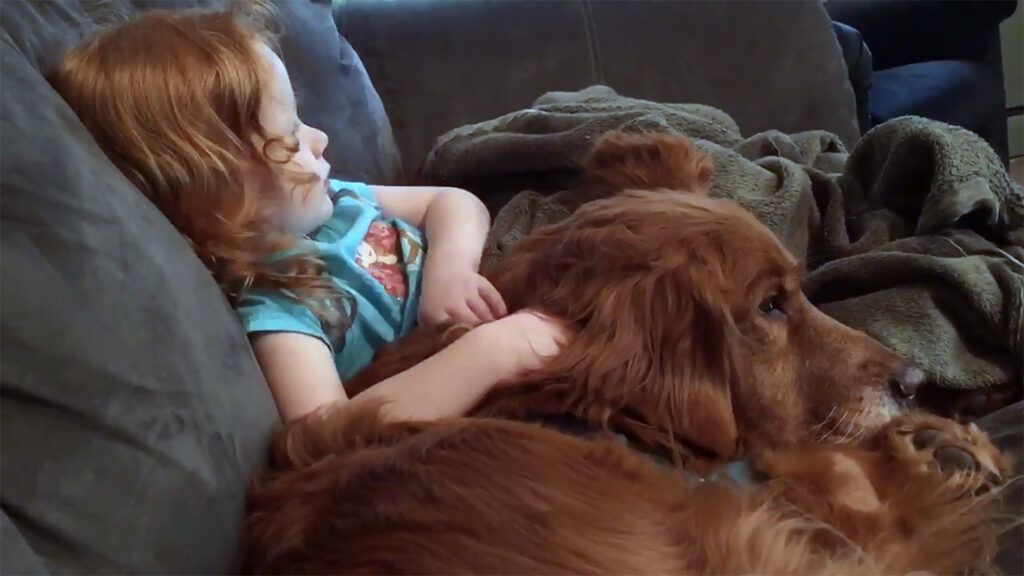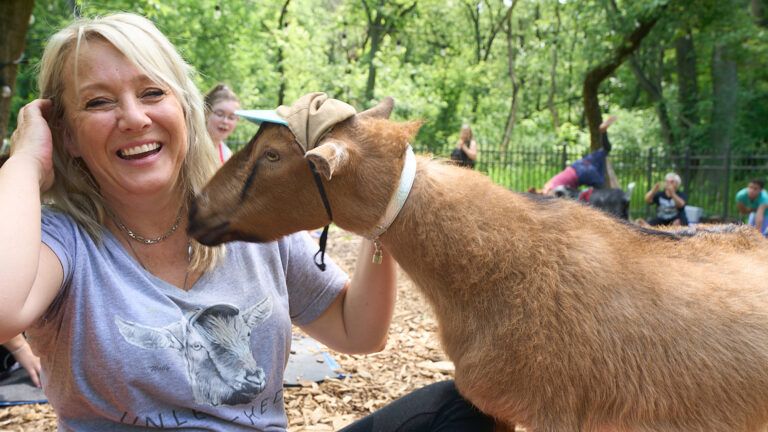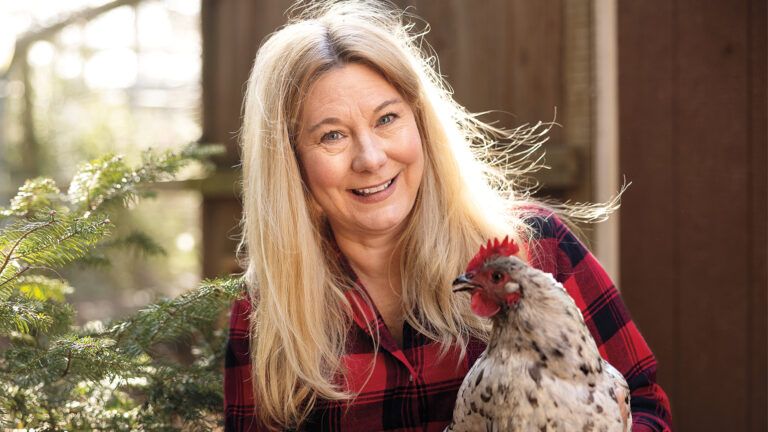Pets and grandchildren…you love them both, and for good reason—they’re adorable! But putting the two together requires attention and understanding. When our granddaughters, ages one and three, visit, they get so excited by our puppy, Petey, that they run around the house, laughing and squealing. Petey follows, jumping and tugging at their pant cuffs. I regularly remind the girls to stay calm and move slowly around Petey and our senior golden retriever, Ernest.
I’m always careful with any interaction between our granddaughters and our dogs. Even the most docile pet can be unpredictable around young children. And some kids may unintentionally stress or injure your pet. Here are some tips for introducing your grandchildren—or any child that visits your home often—to your pet, and setting them up to become best buds.
1. Take it slow and easy. For the initial introduction, get the grandkids seated on the floor or couch. Tell them that your pet will feel more comfortable if they are quiet and still. Let your pet come to them on its own terms. Explain that sniffing is the way your cat or dog learns about them. Show them how to offer the back of their hand to your dog for a first meet-and-greet sniff.
2. Let them offer treats. Your pet will learn that good things happen when the grandkids visit if you have the kids give it a treat. Teach them to hold the treat on the flat palm of their hand so that little fingers won’t end up in eager mouths.
3. Never leave pets and kids unattended. This might seem unnecessary if you have a cat who loves to cuddle, or a dog who wouldn’t bother a ladybug. But don’t take a chance. A wailing infant, crawling baby or rambunctious schoolchild might accidentally provoke a snarl, scratch or even a snap. Keep a watchful eye on them.
4. Consider your pet’s temperament. Ernest instinctively approaches babies softly and stays calm around young children. Some pets, however, feel frightened by kids’ quick movements and loud voices. If you already know that your cat or dog doesn’t enjoy children, don’t force it. Keep your pet in a separate room with some toys when the grandchildren visit.
5. Enforce safety rules. Repeat and reinforce these three basic rules: Never put your face close to the pet’s face. Never bother the pet when it’s eating. Never bully or tease any animal.
6. Show kids how to handle your pet. Demonstrate how your cat prefers to be held and places your dog likes to be patted. Petey likes a scratch behind the ears and Ernest enjoys a belly rub. Explain that it hurts when they hug Kitty too tight, or try to take pony rides on Fido. If you have a small pet, make sure that your grandchild is old enough to handle it, and demonstrate how to safely pick it up. Be sure, as well, that the children understand signs that an animal doesn’t want to be held or played with. Older dogs may tire out before the kids!
7. Let them help care for your pets. During one visit, my older granddaughter, Grace, ran up to me with the measuring scoop and said, “Ernest and Petey so hungry. Time for din-din.” It wasn’t feeding time, but I wanted to encourage her so I said, “Let’s feed them together.” We told the dogs to sit and wait, then I guided her hand as we poured the kibble into their bowls. She was so proud, and learned that having a pet involves responsibility too. Older kids can brush the cat or help take the dog for a walk.
8. Teach them empathy. I knew I’d done something right when I heard Grace talking to Ernest. “Nice boy,” she said—the very same words and intonation as I use—and gently stroked his head. She was learning empathy and kindness. Take every opportunity to teach your grandchildren about compassion for your pets. When they are kind and fair to animals, they also learn to treat people with the same respect.
PEGGY FREZON is author of books about the human-animal bond, including Faithfully Yours: The Amazing Bond Between Us and the Animals We Love. She and her husband rescue senior golden retrievers and are involved in therapy dog work. Connect with her on Facebook at facebook.com/peggyfrezonbooks, on Twitter @peggyfrezon and at The Writer’s Dog.
For inspiring animal-themed devotions, subscribe to All God’s Creatures magazine.





